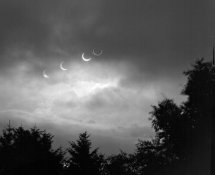George Papantoniou
Member
On Wednesday at 12:30 local time (GR), the sun will be totally eclipsed by the moon. The phenomenon will be visible from some greek regions, notably the island of Kastellorizon (100%) and the Heraklion (home of APUGGER Aristoteles Grammatikakis) city (94%).
I will try to be in Heraklion (cannot make it to Kastellorizon) for a job on Wednesday and, in this way, be able to view the eclipse (although it will not be a total eclispe for me).
I have a few questions:
Has anyone photographed the sun and a total eclipse, and if yes, how?
Will my B&W infrared 093 filter permit me to view the phenomenon with safety (for my eyes) ? Would a pair of solder's protective glasses be better ?
I will try to be in Heraklion (cannot make it to Kastellorizon) for a job on Wednesday and, in this way, be able to view the eclipse (although it will not be a total eclispe for me).
I have a few questions:
Has anyone photographed the sun and a total eclipse, and if yes, how?
Will my B&W infrared 093 filter permit me to view the phenomenon with safety (for my eyes) ? Would a pair of solder's protective glasses be better ?






 ), it was not unusual to make a makeshift solarfilter from a piece of exposed B&W-film, which is just as safe as the expensive but optical better solarfilters.
), it was not unusual to make a makeshift solarfilter from a piece of exposed B&W-film, which is just as safe as the expensive but optical better solarfilters.
